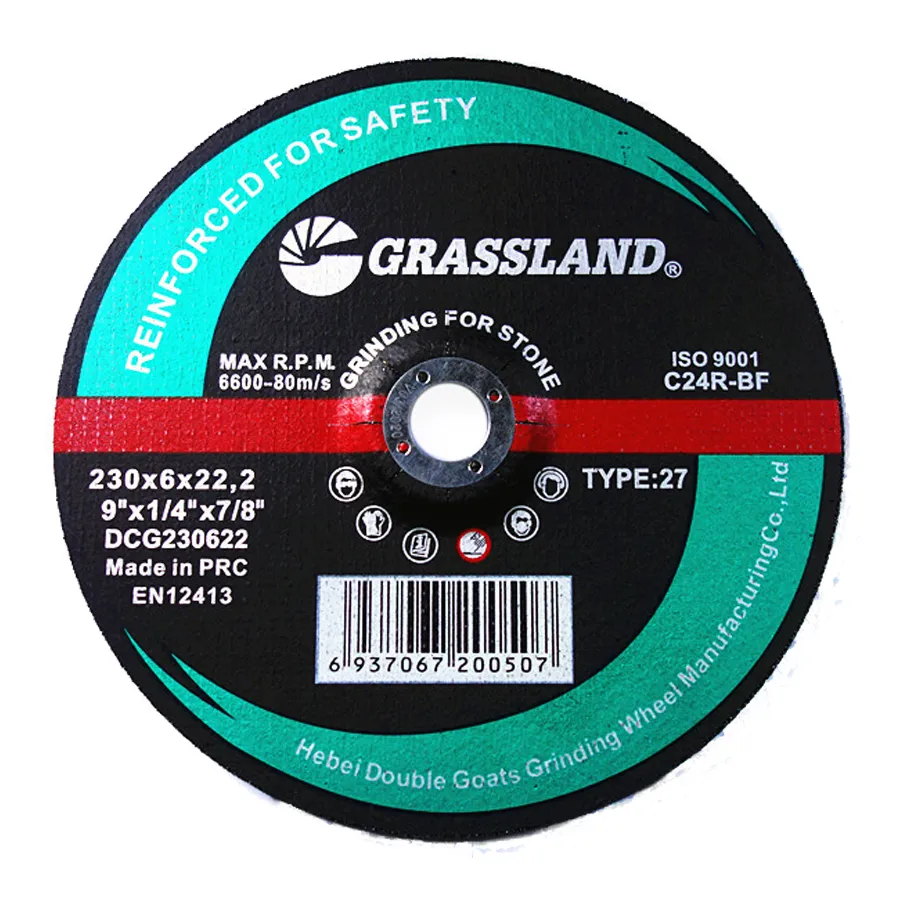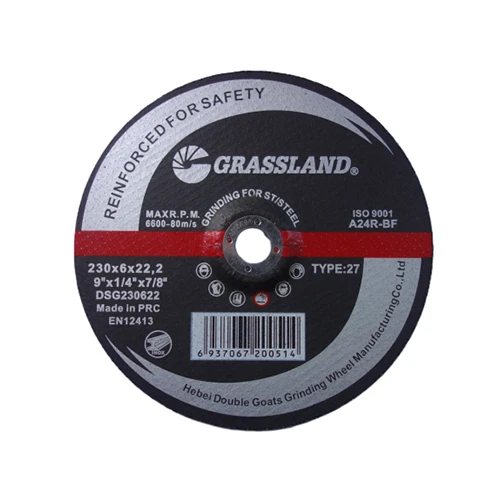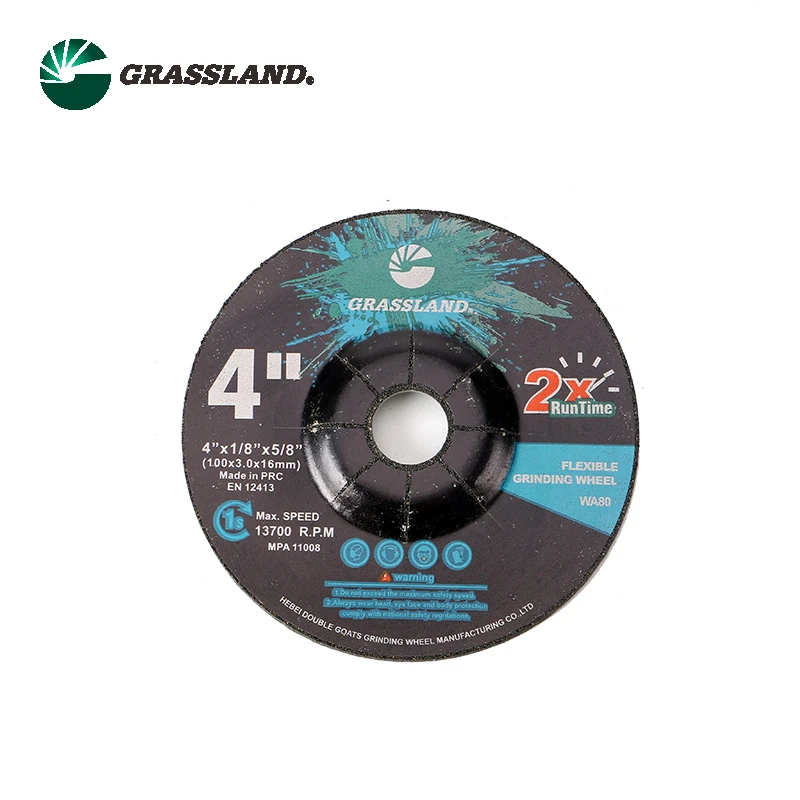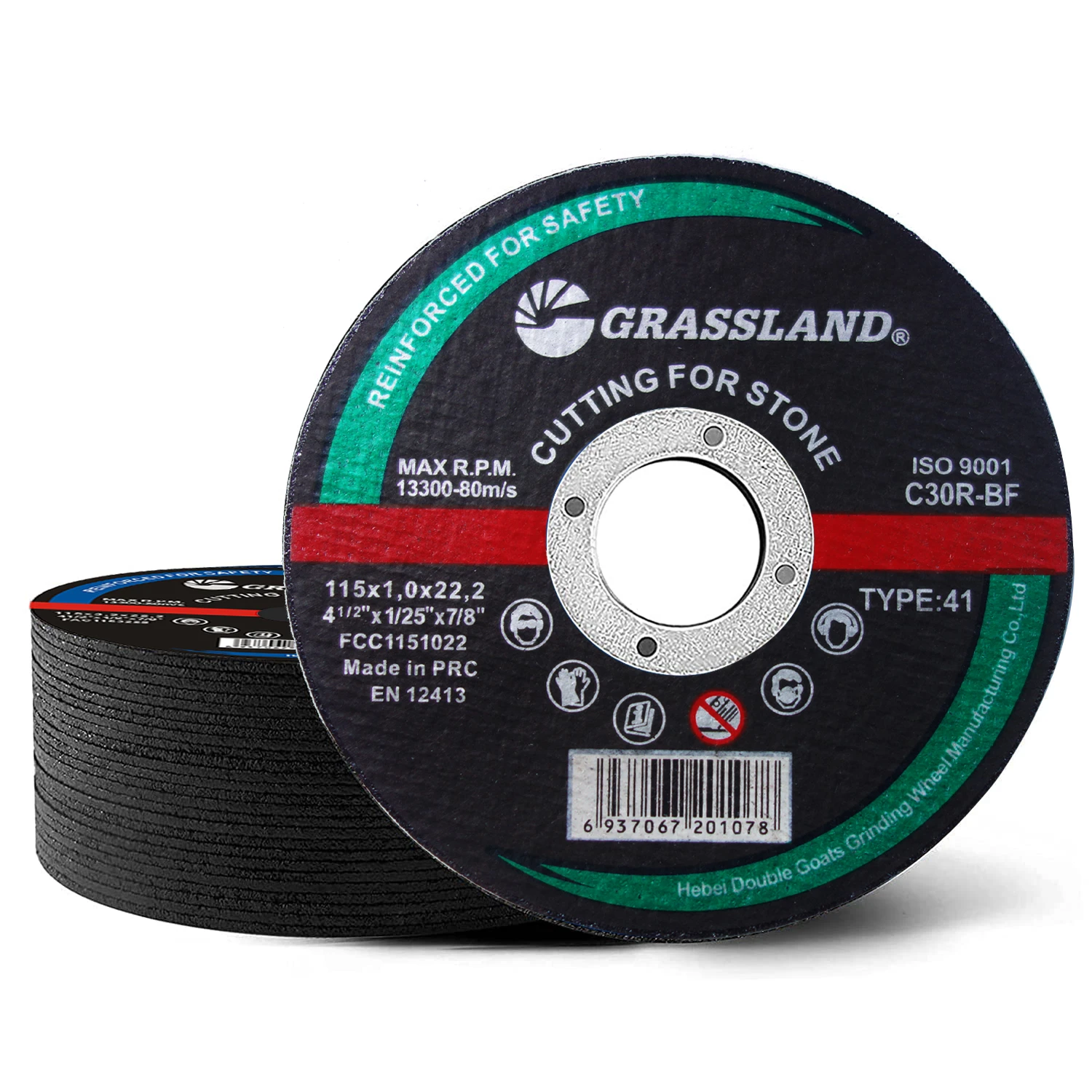- Introduction to 7 inch metal cutting disc
and its industrial importance - Technical advantages of modern metal cutting discs
- Market comparison: Evaluating 4, 5, 7, and 14 inch metal cutting discs
- Custom solutions for diverse metal cutting applications
- Data-driven analysis: Choosing the right diameter for your project
- Case studies: Real-world examples of 7 inch metal cutting disc applications
- Conclusion: Lasting value and future trends of 7 inch metal cutting discs

(7 inch metal cutting disc)
Introduction: The Versatility of 7 Inch Metal Cutting Disc in Industrial Applications
The 7 inch metal cutting disc remains one of the most sought-after solutions for professional fabricators worldwide, owing to its balance between cut precision and accessibility. For industries dealing with various alloys, thicknesses, and cutting requirements, the disc's medium size aligns with both handheld and stationary machinery. Global data projects that the demand for metal cutting discs will reach over $3.2 billion by 2025, led largely by sectors relying on construction-grade steel and aluminum processing. With escalating technical requirements, the 7 inch disc stands out due to its adaptability, ensuring reduced wheel changes and minimized downtime. As a result, professionals are migrating from traditional cutting solutions to more efficient, highly engineered abrasive discs.
Technical Advantages: Superior Performance Across Metal Cutting Disc Ranges
Innovations in abrasive technology have significantly enhanced the efficiency of metal cutting disc 14 inch, 5 inch metal cutting disc, and metal cutting disc 4 inch models. Among its competitors, the 7 inch disc offers the optimal ratio between depth of cut and disc durability. Modern discs are crafted from advanced alumina and zirconia blends, which have increased operating speeds by up to 25% without sacrificing safety. When tested in high-throughput environments, these discs deliver cleaner cuts, exceeding ISO 9001:2015 standards, and increasing the yield per unit by up to 18% over older designs. Lower friction coefficients reduce the risk of thermal deformation, which is particularly vital in fine instrumentation and aerospace component manufacturing. Furthermore, noise emissions have decreased by nearly 30% due to improved bond matrices and reinforced fibers.
Market Comparison: 4, 5, 7, and 14 Inch Metal Cutting Discs
| Size | Typical Application | Max RPM | Average Lifespan (Cuts) | Average Price (USD) | Recommended Metal Thickness |
|---|---|---|---|---|---|
| 4 inch | Precision trimming, plumbing, light steel | 13,300 | 65-80 | $0.90–$1.50 | 1–6 mm |
| 5 inch | Automotive repair, sheet metal work | 12,200 | 80–110 | $1.10–$2.25 | 2–8 mm |
| 7 inch | Fabrication shops, structural steel, pipelines | 8,500 | 160–210 | $2.00–$4.50 | 3–14 mm |
| 14 inch | Heavy-duty fabrication, rail cutting, foundries | 4,400 | 350–470 | $8.75–$18.00 | 6–50 mm |
The data highlights that while 4 inch and 5 inch discs cater to lighter tasks, their lifespans and operating capacity are modest compared to the 7 inch model. A 7 inch metal cutting disc offers a robust median: extended durability, compatibility with widespread angle grinders, and a price point that remains attractive to both small businesses and industrial plants. In contrast, the metal cutting disc 14 inch is ideal for stationary saws and heavy-gauge metals but may incur higher upfront costs and operational constraints due to machinery requirements.
Custom Solutions: Designed for Specific Metal Cutting Demands
As the landscape of metalworking evolves, customization has emerged as a key competitive factor. Leading manufacturers now provide bespoke solutions for clients whose processes differ from the norm. Discs can be tailored for enhanced cut speed, heat resistance, or prolonged edge retention. For instance, high-volume automotive assembly lines opt for reduced kerf widths and reinforced sidewalls, minimizing material waste and maximizing throughput. Specialized metal cutting disc 4 inch models with premium diamond-infused abrasives deliver longer life in confined spaces. The 7 inch format is particularly amenable to custom bonding agents, anti-vibration cores, or specialty grit blends, depending on whether a cleaner finish or faster processing is desired. This adaptability ensures that large-scale construction contractors and niche electronics manufacturers alike receive optimal results.
Data-Driven Analysis: Determining the Optimal Metal Cutting Disc Size
Selecting the appropriate disc diameter is a function of cut depth, tool compatibility, and production demands. Surveys indicate that 68% of surveyed metalworking shops use the 7 inch disc for structural steel, due to its ability to balance maneuverability with efficient material removal. For ultra-fine cuts, a metal cutting disc 5 inch offers superior precision, yet operational times increase by 22% when compared to the 7 inch model for sections above 6 mm thickness. In contrast, the 14 inch variant reduces time per cut by half in thick metal fabrication, yet often requires more expensive, fixed-platform saws. Key performance metrics for end-users are summarized below:
- Cost Efficiency: 7 inch discs deliver the best blend of performance and affordable tooling for most workshops.
- Versatility: Usable on standard hand-held grinders and cut-off machines without specialized retrofitting.
- Safety: Advances in anti-kickback design have reduced incidents by 15% over the last two years in field tests.
The optimal approach involves auditing production volumes, thicknesses encountered daily, and the types of metals cut most frequently. By leveraging this analysis, operational efficiency can be drastically improved.
Case Studies: How 7 Inch Metal Cutting Discs Transform Industry Practices
A prominent case from the North American shipbuilding industry demonstrated an annual savings of nearly $87,000 by switching from 5 inch to 7 inch metal cutting discs for steel deck fabrication. The site reported a 23% reduction in labor hours due to fewer disc changes and improved cutting power. In the energy sector, pipeline repair crews favored the 7 inch format for in-field applications on 10–12 mm thick pipes, citing faster penetration rates and less rework. Conversely, a leading electronics enclosure manufacturer opted for custom-bonded metal cutting disc 4 inch models in tight-configuration runs, prioritizing long-term tool life over cutting speed. These diverse cases reinforce the necessity of aligning disc selection with industry-specific metrics. On-site feedback over twelve months further highlighted that operators using 7 inch discs experienced less fatigue due to stable handling and optimized disc balance, culminating in improved work quality and consistency.
Conclusion: The Evolving Value and Future of the 7 Inch Metal Cutting Disc
In summary, the adoption of the 7 inch metal cutting disc proves to be driven by a combination of versatility, cost efficiency, and reliability. While options such as metal cutting disc 14 inch, 5 inch metal cutting disc, and metal cutting disc 4 inch maintain important roles across specialized applications, the 7 inch disc continues to set the industry standard for a wide spectrum of heavy-duty and general-purpose cutting tasks. Anticipated advances in abrasive material science, sustainability, and automation ensure that the significance of the 7 inch disc will only deepen, offering factories and workshops unmatched flexibility and economic value. As enterprise requirements broaden and new alloys emerge, the thoughtful integration of this product remains vital for streamlined, high-performance operations.

(7 inch metal cutting disc)
FAQS on 7 inch metal cutting disc
Q: What materials can a 7 inch metal cutting disc cut through?
A: A 7 inch metal cutting disc is designed for cutting ferrous and non-ferrous metals such as steel, iron, and aluminum. It delivers clean and fast cuts. Always check the disc label for material compatibility.Q: How does a 7 inch metal cutting disc compare to a 14 inch metal cutting disc?
A: A 14 inch metal cutting disc is larger and typically used for heavy-duty industrial applications or larger workpieces. The 7 inch disc is more suited for medium-sized tasks and offers greater maneuverability. Choose based on your tool and the thickness of the metal.Q: Can a 5 inch metal cutting disc be used instead of a 7 inch disc?
A: A 5 inch metal cutting disc can be used for smaller or more precise cutting tasks. However, it covers less area per pass compared to a 7 inch disc. Ensure the disc size matches your tool’s specifications.Q: What safety precautions should I take when using a 4 inch metal cutting disc?
A: Always wear safety goggles, gloves, and ear protection when using a metal cutting disc. Ensure the disc is properly installed and never exceed the recommended RPM. Keep bystanders at a safe distance during operation.Q: How do I choose the right size metal cutting disc for my project?
A: Select the disc size based on your cutting tool compatibility and the thickness of the metal. Larger discs like 14 inch are suited for thick, long cuts, while smaller ones like 4 inch and 5 inch are ideal for precision and lighter tasks. Always follow manufacturer guidelines.Post time:Jul - 06 - 2025

















